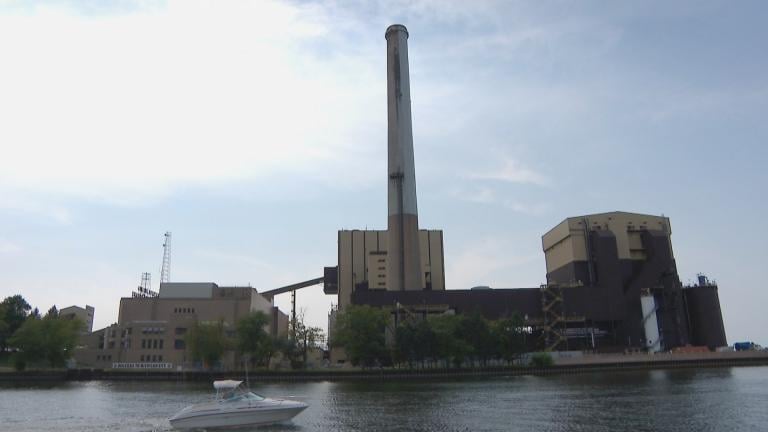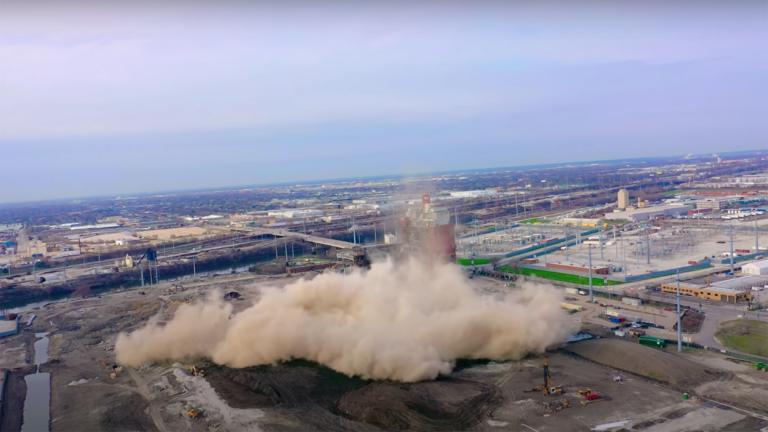A recent confidential watchdog report found that Chicago officials could and should have prevented a botched smokestack implosion in Little Village, rekindling conversations about the role of industry in neighborhoods and where accountability lies when violations occur.
The 2020 implosion caused a plume of dust to cover the Little Village community during the COVID-19 pandemic, endangering the health of residents.
Kim Wasserman, executive director of the Little Village Environmental Justice Organization, said that in a recent community meeting held in the group’s office, people in the community spoke about how the new report has retraumatized them and served as a reminder that environmental racism in the city is still very real.
“It’s a reminder of exactly what we knew, which is that the system is not built to protect communities like ours, that what was more important was this company being able to move forward and move their project forward than the protection of our health as a community,” Wasserman said.
Howard Learner, executive director of the Environmental Law and Policy Center, said the people who didn’t do their jobs correctly, such as contractors and people working for the city, should be held accountable.
“We can’t run the way-back machine and undo what happened, but we need to figure out, really, what happened,” Learner said. “The public needs to know, that should be transparent, and the lessons learned. Things should be fixed within the system so this doesn’t happen again in Little Village or any other community in Chicago.”
The Chicago Department of Public Health released a statement that said, in part: “As the Mayor and others stated at the time of the incident, the implosion at the former Crawford Generating Power Plant was an unacceptable event. Contractor negligence and failures led to the dust cloud that created fear and trauma in Little Village. This administration took swift, public action to hold those responsible accountable. Since that time, the City has significantly enhanced efforts to protect communities from environmental harm. … In addition, testing of air, dust, and soil was conducted by CDPH and the U.S. EPA, and CDPH also installed seven state-of-the-art dust measures to monitor and assure air quality on and around the site going forward - the cost of which has been borne by Hilco.”
Additionally, demolition requirements for contractors now include a list of environmental impact rules including site assessments, asbestos and waste removal documentation, dust mitigation plans and contingency plans for dust control, among other points.






